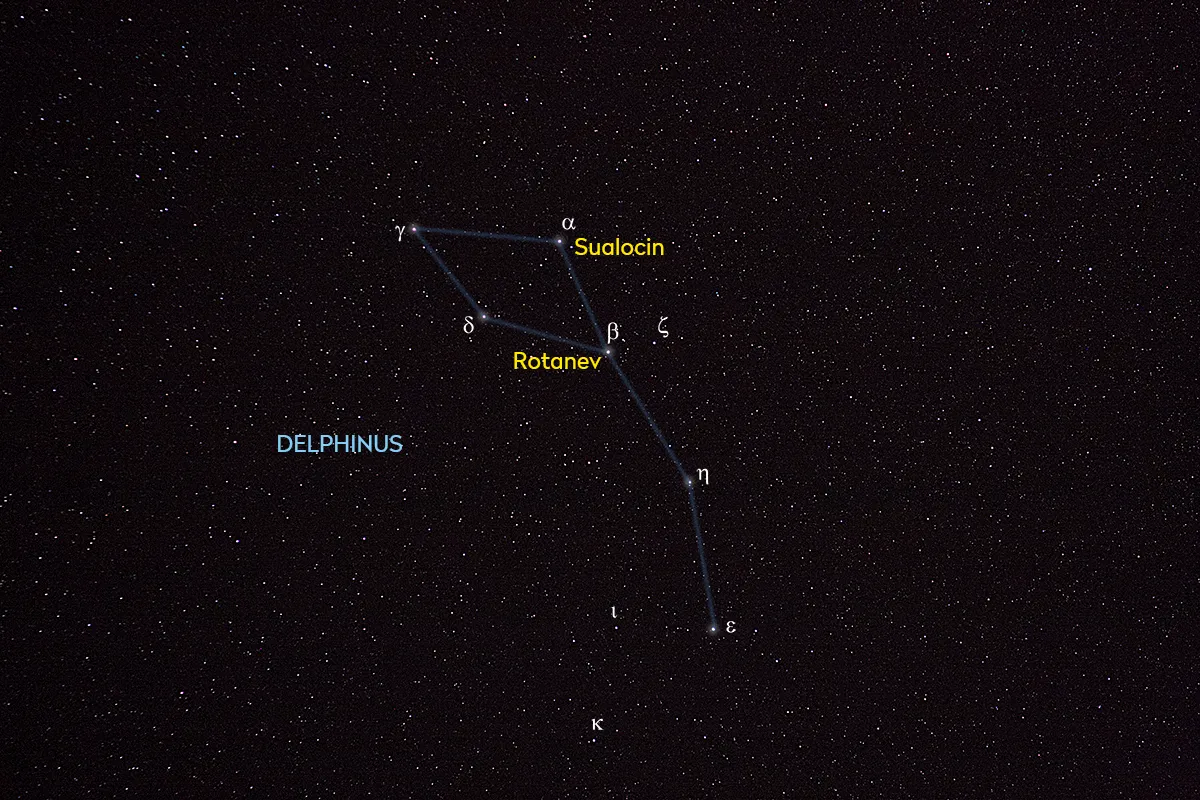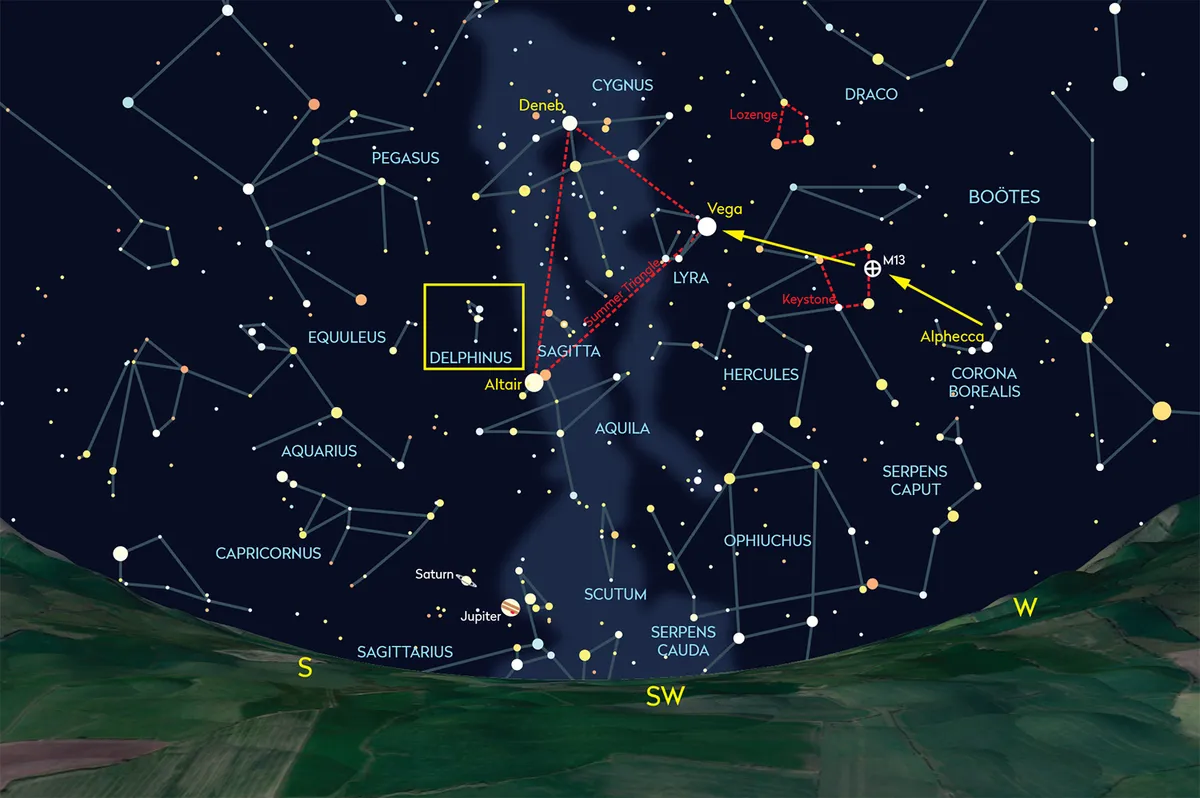Delphinus is a small but very identifiable constellation representing the head and neck of a bottlenose dolphin. It lies 12° to the east and slightly north of the bright star Altair (Alpha (α) Aquilae), which marks the bottom vertex of the giant asterism known as the Summer Triangle.
For advice on how to find the Summer Triangle, read our guide to the best summer constellations or find Delphinus using our guide to autumn constellations.
Interested in finding more familiar shapes in the night sky? See if you can spot the Teapot asterism and the Coathanger asterism.

Delphinus resembles a diamond shape with a tail. The two stars on the western side of the diamond, Alpha (α) and Beta (β) Delphini, have the unusual names of Rotanev and Sualocin, more of which to follow.
Sualocin is a binary star with five additional companions which are most-likely just line-of-sight acquaintances.
The binary star consists of Alpha Delphini Aa (Sualocin) and Alpha Delphini Ab.
The pair appear close with a separation of just 0.2 arcseconds and take 17 years to complete one mutual orbit around each other.
The secondary is about one-tenth as bright as the primary and of stellar spectral class A.
Aa has a spectral type B9IV, indicating it’s a hot white subgiant. Despite its alpha designation, at mag. +3.8 Sualocin is the second brightest star in Delphinus after mag. +3.6 Rotanev.

Sualocin (Aa) lies at a distance of 254 lightyears and has a mass 2.8 times as great as our Sun. Its temperature is estimated at 11,340˚C.
The names Sualocin and Rotanev first appeared in the Palmero star catalogue of 1814.
Astronomer Thomas Webb worked out that they represent the name of an assistant to the Palmero Observatory’s astronomer, Guiseppe Piazzi.
The latinised name of the assistant was Nicolaus Venator; reverse the letters and you get the star names.
This guide originally appeared in the August 2021 issue of BBC Sky at Night Magazine.
